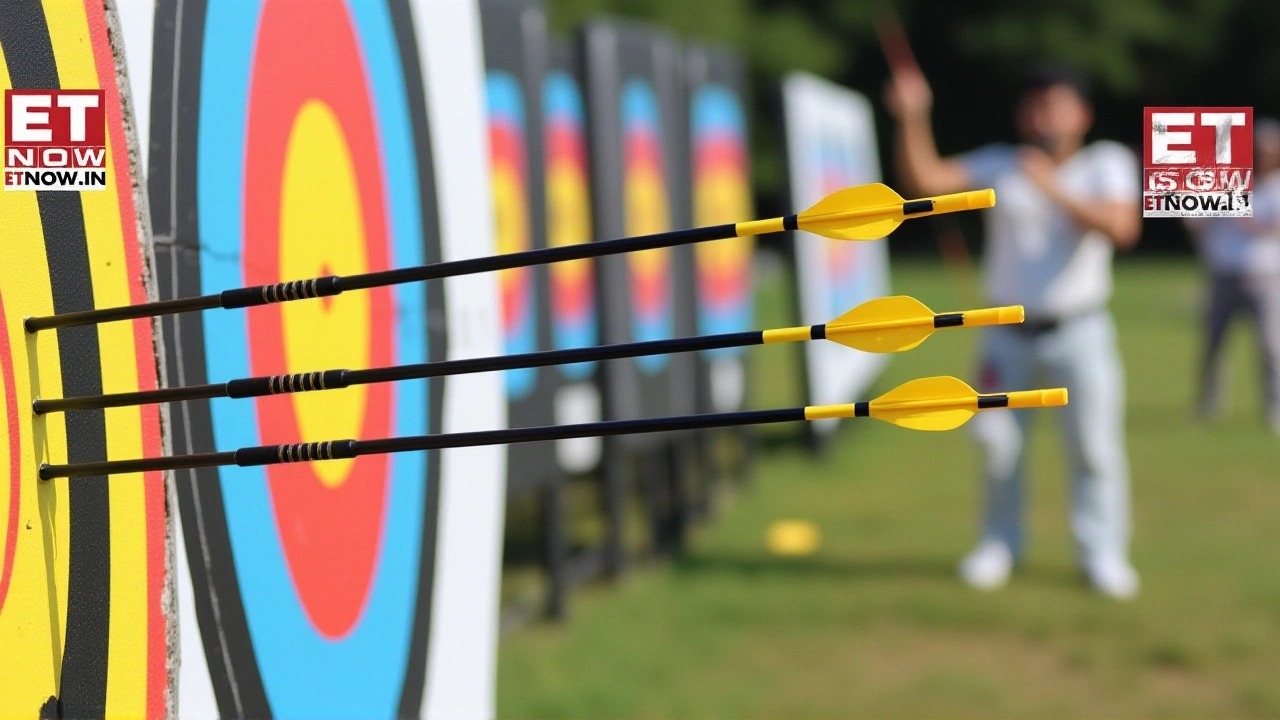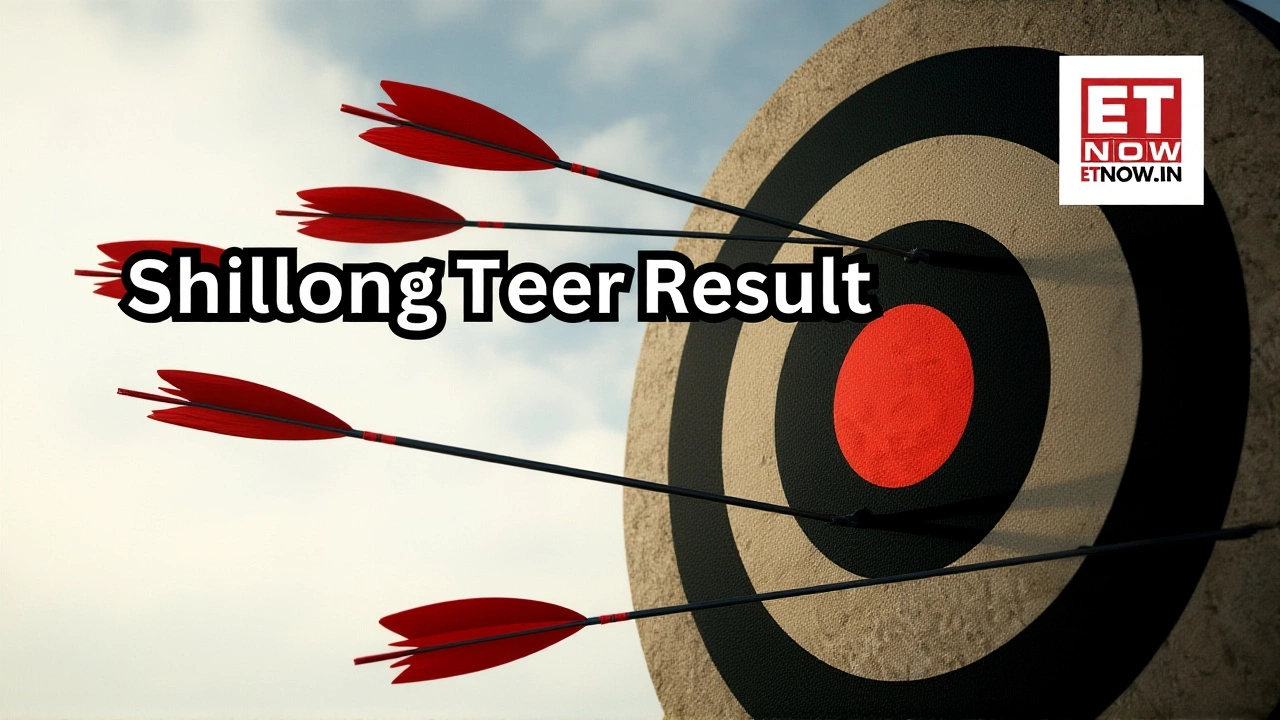When Khasi Hills Archery Sports Association (KHASA) posted the February 6, 2025 numbers, the whole state of Meghalaya felt a familiar tingle of anticipation. The afternoon’s main contest at the Shillong Polo Stadium delivered winning numbers 68 for the first round at 3:45 PM and 93 for the second round at 4:45 PM, sending thousands of bettors scrambling to claim their stakes.
Background: How Shillong Teer Became a State‑Wide Phenomenon
Born out of the Khasi tribe’s centuries‑old archery traditions, the Shillong Teer lottery blends sport, culture, and gambling into a single daily ritual. Under the Meghalaya Amusement and Betting Tax Act, the game is legal and regulated, a rarity in India’s otherwise strict betting landscape. Each round sees fifty archers unleash thirty arrows in the first round and twenty in the second, with the sum of arrows landing in the target zone becoming the winning number.
Historically, the game started as a post‑festival contest in the early 1970s, but by the 1990s it had morphed into a full‑blown lottery system, complete with over 5,000 licensed teer counters scattered across the hills. The popularity surged after the state government officially sanctioned the activity, seeing it as a way to promote traditional archery among youth while generating tax revenue.
February 6, 2025 Results Overview
The day began with the Morning Teer in Shillong, where the first‑round number 43 and the second‑round number 77 were declared at 10:30 AM and 11:30 AM respectively. The afternoon’s headline contest – the one everyone watches on TV – produced the 68/93 pair, as mentioned earlier.
Evening didn’t slow down. The Night Teer rolled out 97 and 84 for its two rounds, while the Khanapara Teer – a satellite event in the neighboring town – posted 73 and 42. Out in Juwai, participants saw a flurry of numbers: 58/87 for the regular draw, 01/66 for the morning session, and 88/07 for the night slot.
Finally, the Jowai Ladrymbai lottery – a lesser‑known variant – rounded the day with 83 and 04. All these figures were confirmed by KHASA officials after the final arrow volley at 9:00 PM.
Details: How the Numbers Were Calculated
Each round’s total is derived from the sum of arrows that successfully hit the target’s scoring zone. For instance, in the afternoon’s first round, the fifty archers collectively landed 3,400 arrows in the bullseye, which reduces to the two‑digit number 68 after the KHASA‑prescribed modulo operation.
Here’s a quick snapshot of the day’s key stats:
- 50 archers per round, 30 arrows each in round 1, 20 arrows each in round 2.
- Over 5,000 licensed teer counters across Meghalaya, with the majority clustered in Shillong and its outskirts.
- Games run six days a week – Monday through Saturday – with Sunday as a mandatory off‑day.
- Seasonal timing shifts: February follows the standard schedule, but summer months see earlier draws.
The “house numbers” – 7, 4, 8 – and “ending numbers” – 6, 0, 9 – were also released, giving regular players a set of common combinations to watch. Popular target combos for the day included 76, 67, 70, 07, 79, 97, 46, 64, 40, 04, 49, 94, 86, 68, 80, 08, 89, 98, 09, 60, 74, 48, 84, 90.
Voices from the Field: Reactions and Quotes
“Today’s numbers reflect a solid performance from our archers, especially in the afternoon round where the wind was unusually calm,” said Ranjit Hazarika, secretary of KHASA. “We’re hopeful the trend encourages more youngsters to take up archery, not just for the lottery but as a sport.”
State leader Conrad Sangma praised the system during a recent press briefing, noting that the revenue generated helps fund rural development projects. “When tradition fuels the economy, everyone wins,” he remarked.
Media outlets, including Times Now News, rushed to publish real‑time updates, confirming that digital counters saw a 12% spike in traffic compared to the previous week.

Cultural and Economic Impact: More Than Just a Game
Beyond the cash flow, the Shillong Teer lottery serves as a cultural touchstone. Parents often bring their children to the Polo Stadium to watch the archers, turning the event into a communal gathering. The daily ritual also sustains a network of vendors, from tea stalls to mobile recharge shops, all benefiting from the steady footfall.
Economically, the state collects roughly ₹1.5 crore in betting taxes each month, a figure that has grown by 8% year‑over‑year since the act’s amendment in 2019. This money is earmarked for infrastructure upgrades in remote villages, illustrating a direct link between the game and tangible development.
However, critics warn of potential gambling addiction, especially among young adults. NGOs have called for more robust counseling services at teer counters, a demand the government says it is evaluating.
What’s Next? Looking Ahead to Future Draws
KHASA has already hinted at a pilot program to introduce electronic scoring for the next season, aiming to reduce manual errors and speed up result publication. If successful, Meghalaya could become the first Indian state to fully digitalize an archery‑based lottery.
Meanwhile, players are already eyeing the upcoming ‘Bumper Lottery’ scheduled for the end of March, a special event that combines all regional draws into one massive pot. History suggests that bumper weeks see prize payouts rise by up to 30%.
In short, February 6 delivered another chapter in the evolving story of Shillong Teer – a blend of heritage, finance, and community spirit that shows no sign of slowing down.
Frequently Asked Questions
How are the winning numbers for Shillong Teer calculated?
Each round’s total comes from the sum of arrows that hit the scoring zone. The total is then reduced to a two‑digit number using a modulo operation defined by KHASA, producing the final winning figure.
Who regulates the Shillong Teer lottery?
The game is overseen by the Khasi Hills Archery Sports Association under the Meghalaya Amusement and Betting Tax Act, which sets the legal framework and tax rates.
What impact does the lottery have on the local economy?
Tax revenues from the lottery average around ₹1.5 crore per month, funding rural infrastructure and community projects. Additionally, teer counters support thousands of ancillary businesses, from food stalls to mobile services.
Are there any social concerns linked to Shillong Teer?
Yes, NGOs have flagged potential gambling addiction, especially among youth. Calls for counseling services and responsible‑gaming programs are growing, and the state is reviewing possible interventions.
When is the next major Teer event after February 6?
The next highlight is the 'Bumper Lottery' slated for the last week of March, which combines multiple regional draws into a single high‑payout event.
